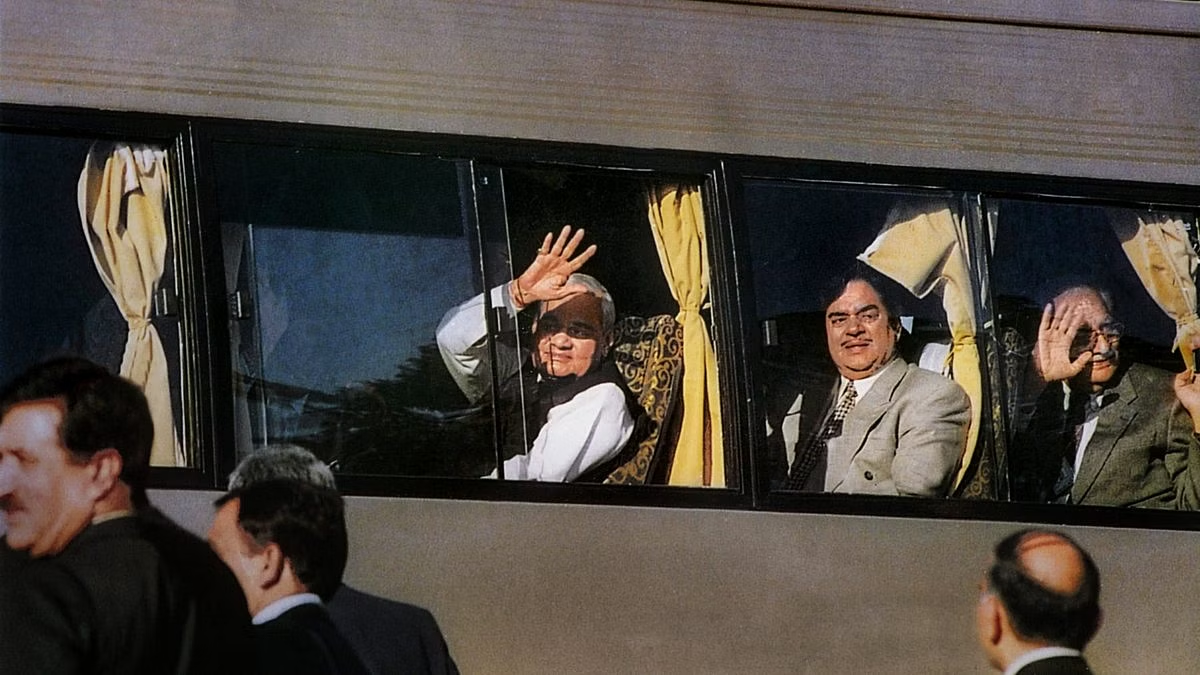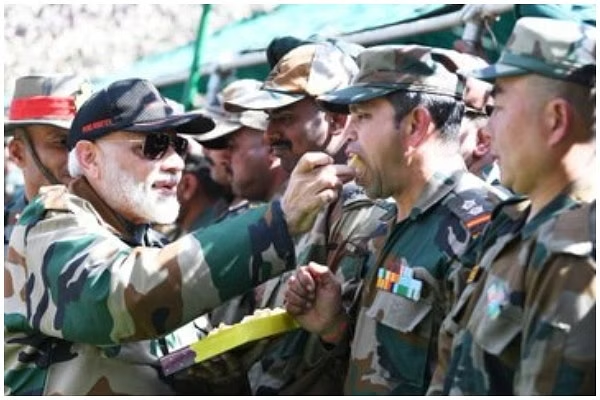.webp)
Ahmed Ali Fayyaz/Srinagar
If Prime Minister Atal Behari Vajpayee created history by travelling from Delhi to Lahore on the inaugural bus of Sada-e-Sarhad on 19 February 1999, Prime Minister Modi would be scripting history by travelling on the first train from Delhi to Kashmir early next year.
Having come out of the biggest challenge on the Rs 35,000 crore Udhampur-Srinagar-Baramulla Railway Line (USBRL) – including the world’s tallest railway bridge at Kauri-Bakal - the Indian Railway is now ready for its inauguration by PM Modi in February 2024.
If all goes well, Prime Minister Narendra Modi will be travelling to Kashmir by the first train, most likely a Vande Bharat, in the fourth week of February, to dedicate this historic link to the nation.
Authoritative sources have told Awaz-The Voice that both the Jammu-Srinagar four-lane highway and the Udhampur-Srinagar-Baramulla rail link would be inaugurated by the Prime Minister before the Lok Sabha elections.
Preparations are afoot for a massive public meeting to be addressed by Modi on the same day at Anantnag. If all goes well, it would be Modi’s first public meeting in the valley in his second term as Prime Minister since.
Modi visited J&K thrice in the last five years, but every time he spent time with the security forces on Diwali. PM has been one of the most frequent travellers to J&K, having toured the erstwhile State as many as 15 times in his first term.

PM Atal Behari Vahjpayee in the bus to Lahore
The 1,315 metre (4,314 ft) long steel arch bridge at Kauri-Bakal over the river Chenab is an engineering marvel constructed by Afcons Infra India for Konkan Railways with for Rs 1,486 crore.
The steel mesh wide pavements on either side of the broad gauge track, according to the site engineers, have been designed to make it explosion-proof. It can withstand the wind velocity of 266 km/hour and a train would pass smoothly at a speed of 100 km/hour. With a designed life of 120 years, the bridge could withstand earthquake pressure up to 8 Richter scale.
According to the engineers, the bridge consumed 28,660 metric ton of steel. “It’s the world’s 16th tallest bridge and the 11th longest arch bridge”, said an engineer at the site. In all, 1300 workers and 300 engineers raised this structure in about 18 years.

PM Narendra Modi with troops on Diwali
While the bridge’s slope stability analysis has been conducted by Indian Institute of Science (IISc) Bangalore and Indian Institute of Technology (IIT) Delhi, several Indian and foreign companies have been associated with the designing and construction of the bridge. “We had to stop work and change its design and alignment several times. Finally we are proud that our mission is accomplished”, said a local welding mechanic.
He said that he had been working at the bridge continuously since 2004-05.
According to Sanjay Gupta, Chairman and Managing Director of Konkan Railways, the terrain and geology at Kauri-Bakal offered unprecedented challenges even as Konkan had constructed many bridges and tunnels in favourable geology in the past.
The Indian Railways’ first cable-stayed bridge at Anji-Khad has also been raised on the same track between Bakal and Reasi. Built over 3 spans (the longest being 290 metre), this bridge has a total length of 473 metre (1,553 ft) and a height of 196 metre (643 ft).
The USBRL’s most difficult part of 111 km from Katra to Banihal passes through 35 tunnels spanning over 97 km besides 26 big and 11 small bridges. These include the Indian Railways’ longest escape tunnel (T-14) with a length of 12.89 km alongside the main tunnel (T-49) of 12.75 km which is now the Indian Railways’ longest main tunnel. It has been constructed with the New Austrian Tunnelling Method.
As the 40-km Sialkot-Jammu railway line closed with the Partition in 1947, the Indian Railways started laying the Pathankot-Jammu track in 1971. It became operational in 1975. Work began on extending the railway line up to Udhampur in 1983. It was inaugurated in 2004. The first announcement of building the Jammu-Udhampur-Srinagar-Baramulla railway line was made in 1994. In 2004 it was declared as a project of national importance.
The author at Kauri-Bakal bridge
While the 53-km Jammu-Udhampur leg was completed in 2004 and the 25-km Udhampur-Katra extension accomplished in 2014, work was executed and completed in different phases on the 118-km Qazigund-Srinagar-Baramulla leg.
With the construction of an 11.21-km tunnel through the Pir Panjal mountain and an 18-km track between Banihal and Qazigund, the entire 272-km line between Banihal and Baramulla—through Qazigund, Anantnag, Awantipora, Pampore, Srinagar, Budgam, Pattan and Sopore, was operationalized with the local train services in 2013, the same year when the train reached Katra from the Jammu side.
With the opening of the 111-km Katra-Banihal leg, the USBRL project is being commissioned in the next two months. This will for the first time connect Srinagar, Baramulla, and other valley towns to Jammu, Delhi, and other stations across the country. It will be a boon for Kashmir’s students, patients, fruit and handicraft traders besides millions of Indian and foreign tourists and security forces. Traders and common residents in Srinagar view it as the “ultimate game changer”.
ALSO READ: Story of a journey from ‘Road to Rawalpindi’ to ‘Train to Delhi’
The rail connectivity of 270 km between Srinagar and Jammu, which will be a travel time of 3-4 hours by Vande Bharat, will for the first time provide 24x7x365 uninterrupted passage. According to the officials, Vande Bharat—which currently operates up to Katra and takes 6 hours from Delhi to Jammu and 8 hours up to Katra—would run between Delhi and Srinagar. It would be a journey of 11-12 hours. Besides, Vande Bharat Metro would operate between Baramulla and Jammu.
